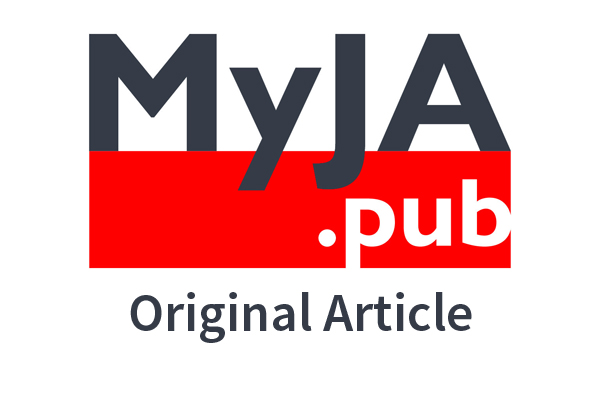Keywords
Abstract
Background: Major hepatobiliary and colorectal surgeries are associated with a risk of blood transfusions. However, risk assessment tools for predicting blood transfusions have not been studied extensively among patients undergoing these types of surgeries. We evaluated the risk factors for perioperative blood transfusions in patients who underwent major hepatobiliary and colorectal surgeries and subsequently created a nomogram.
Methods: Medical records of patients who underwent elective major hepatobiliary and colorectal surgeries in a single university hospital in Malaysia from 2015 to 2020 were retrospectively reviewed. A nomogram to predict transfusions risk was developed, and its discriminatory ability was tested using the area under the receiver operating characteristic (ROC) curve.
Results: Data from 293 patients (61.1% male) with an average age of 59.7 years (± SD 14.51) were analysed. The prevalence of anaemia was 61.1%. A total of 127 patients (43.3%) received at least 1 unit of packed red cells transfusions. On multivariable analysis, gender (odds ratio [OR 1.646), preoperative haemoglobin of 8.0 g/dl or less (OR 0.777), Charlson Comorbidity Index score (OR 1.14) and procedure type (versus colonic surgery, major hepatectomy, OR 6.094; other pancreatomy, OR 1.487; Whipple’s procedure, OR 9.667; and anterior resection, OR 3.569) were associated with a significantly higher risk of transfusions. All 4 of these factors were included in the nomogram. The nomogram’s discrimination and calibration results showed an AUROC curve of 0.754.
Conclusion: The nomogram effectively predicted the need for blood transfusions in major colorectal and hepatobiliary surgeries in our patients.
References
Bennett S, Baker L, Shorr R, Martel G, Fergusson D. The impact of perioperative red blood cell transfusions in patients undergoing liver resection: a systematic review protocol. Syst Rev. 2016;5:38. https://doi.org/10.1186/s13643-016-0217-5
Fong IW. Blood Transfusion-Associated Infections in the Twenty-First Century: New Challenges. Current Trends and Concerns in Infectious Diseases. 2020:191-215.
Stramer SL, Dodd RY. Transfusion-transmitted emerging infectious diseases: 30 years of challenges and progress. Transfusion. 2013;53(10 Pt 2):2375-2383. https://doi.org/10.1111/trf.1237
Webster NR. Stranger danger-mortality after transfusions. Br J Anaesth. 2017;118(3):280-282. https://doi.org/10.1093/bja/aew405
Bian FC, Cheng XK, An YS. Preoperative risk factors for postoperative blood transfusion after hip fracture surgery: establishment of a nomogram. Journal of Orthopaedic Surgery and Research. 2021;16(1):406. https://doi.org/10.1186/s13018-021-02557-5
Guo Y, You L, Hu H, et al. A Predictive Nomogram for Red Blood Cell Transfusion in Pheochromocytoma Surgery: A Study on Improving the Preoperative Management of Pheochromocytoma. Front Endocrinol (Lausanne). 2021;12:647610. https://doi.org/10.3389/fendo.2021.647610
Lee B-H, Lee K-S, Kim H-I, et al. Blood Transfusion, All-Cause Mortality and Hospitalization Period in COVID-19 Patients: Machine Learning Analysis of National Health Insurance Claims Data. Diagnostics. 2022;12(12):2970. https://www.mdpi.com/2075-4418/12/12/2970
Balachandran VP, Gonen M, Smith JJ, DeMatteo RP. Nomograms in oncology: more than meets the eye. Lancet Oncol. 2015;16(4):e173-180. https://doi.org/10.1016/s1470-2045(14)71116-7
Hu C, Wang Y-h, Shen R, et al. Development and validation of a nomogram to predict perioperative blood transfusion in patients undergoing total knee arthroplasty. BMC Musculoskeletal Disorders. 2020;21(1):315. https://doi.org/10.1186/s12891-020-03328-9
Kim Y, Bagante F, Gani F, et al. Nomogram to predict perioperative blood transfusion for hepatopancreaticobiliary and colorectal surgery. Br J Surg. 2016;103(9):1173-1183. https://doi.org/10.1002bjs.10164
Yusop Mohd Faeiz Mtn, Syed Azim Sharifah Mai Sarah, Kamaruzaman Ameera Ashyila, Kugaan Arvend, Osman Mohd Fairuz, Hatta Nur Raihan, Tengku Yazid Tengku Norita, Mokhtar Suryati, Omar Haniza, Amir Ahmad Suhaimi. Intraoperative Blood Loss and Blood Transfusion Requirement Among Liver Transplant Recipients.
A National Single Center Experience 2020. Asian Journal of Transfusion Science. 2021. https://doi.org/https://doi.org/10.5281/zenodo.5457866
Tohme S, Varley PR, Landsittel DP, Chidi AP, Tsung A. Preoperative anemia and postoperative outcomes after hepatectomy. HPB (Oxford). 2016;18(3):255-261. https://doi.org/10.1016/j.hpb.2015.09.002
Bansal SS, Hodson J, Khalil K, et al. Distinct risk factors for early and late blood transfusion following pancreaticoduodenectomy. Hepatobiliary Pancreat Dis Int. 2018;17(4):349-357. https://doi.org/10.1016/j.hbpd.2018.07.001
Guo K, Ma S. The Immune System in Transfusion-Related Acute Lung Injury Prevention and Therapy: Update and Perspective. Front Mol Biosci. 2021;8:639976. https://doi.org/10.3389/fmolb.2021.639976
Klein AA, Collier T, Yeates J, et al. The ACTA PORT-score for predicting perioperative risk of blood transfusion for adult cardiac surgery. Br J Anaesth. 2017;119(3):394-401. https://doi.org/10.1093/bja/aex205
Pulitanò C, Arru M, Bellio L, Rossini S, Ferla G, Aldrighetti L. A risk score for predicting perioperative blood transfusion in liver surgery. Br J Surg. 2007;94(7):860-865. https://doi.org/10.1002/bjs.5731
Roubinian NH, Murphy EL, Swain BE, Gardner MN, Liu V, Escobar GJ. Predicting red blood cell transfusion in hospitalized patients: role of hemoglobin level, comorbidities, and illness severity. BMC Health Serv Res. 2014;14:213. https://doi.org/10.1186/1472-6963-14-213
Maempel JF, Wickramasinghe NR, Clement ND, Brenkel IJ, Walmsley PJ. The pre-operative levels of haemoglobin in the blood can be used to predict the risk of allogenic blood transfusion after total knee arthroplasty. Bone Joint J. 2016;98-b(4):490-497. https://doi.org/10.1302/0301-620x.98b4.36245
Sima CS, Jarnagin WR, Fong Y, et al. Predicting the risk of perioperative transfusion for patients undergoing elective hepatectomy. Ann Surg. 2009;250(6):914-921. https://doi.org/10.1097/sla.0b013e3181b7fad3
Charlson ME, Pompei P, Ales KL, MacKenzie CR. A new method of classifying prognostic comorbidity in longitudinal studies: development and validation. J Chronic Dis. 1987;40(5):373-383. https://doi.org/10.1016/0021-9681(87)90171-8
Lakomkin N, Goz V, Lajam CM, Iorio R, Bosco JA, 3rd. Higher Modified Charlson Index Scores Are Associated With Increased Incidence of Complications, Transfusion Events, and Length of Stay Following Revision Hip Arthroplasty. J Arthroplasty. 2017;32(4):1121-1124. https://doi.org/10.1016/j.arth.2016.11.014
Safiri S, Kolahi A-A, Noori M, et al. Burden of anemia and its underlying causes in 204 countries and territories, 1990–2019: results from the Global Burden of Disease Study 2019. Journal of Hematology & Oncology. 2021;14(1):185. https://doi.org/10.1186/s13045-021-01202-2
Zwiep TM, Gilbert RWD, Moloo H, et al. Improving the treatment of pre-operative anemia in hepato-pancreato-biliary patients: a quality improvement initiative. Patient Safety in Surgery. 2020;14(1):18. https://doi.org/10.1186/s13037-020-00239-5
Clevenger B, Richards T. Pre-operative anaemia. Anaesthesia. 2015;70(s1):20-e28. https://doi.org/https://doi.org/10.1111/anae.12918
Kooby DA, Stockman J, Ben-Porat L, et al. Influence of transfusions on perioperative and long-term outcome in patients following hepatic resection for colorectal metastases. Ann Surg. 2003;237(6):860-869; discussion 869-870. https://doi.org/10.1097/01.Sla.0000072371.95588.Da
Baker L, Park L, Gilbert R, et al. Intraoperative Red Blood Cell Transfusion Decision-making: A Systematic Review of Guidelines. Ann Surg. 2021;274(1):86-96. https://doi.org/10.1097/sla.0000000000004710
Prochaska M, Salcedo J, Berry G, Meltzer D. Racial differences in red blood cell transfusion in hospitalized patients with anemia. Transfusion. 2022;62(8):1519-1526. https://doi.org/10.1111/trf.16935







